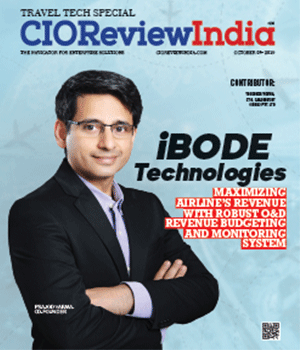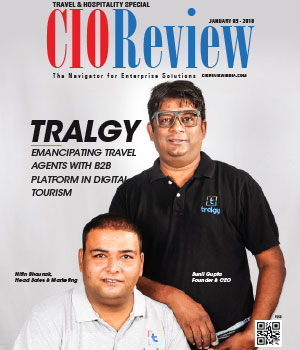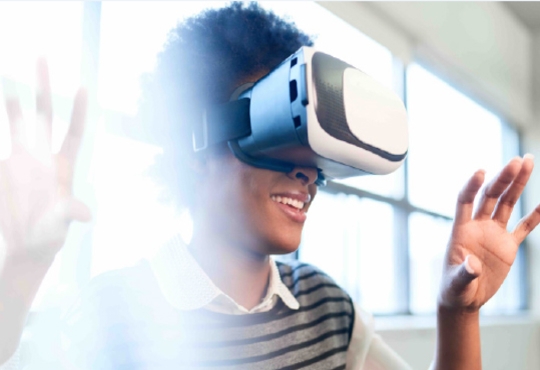
It is not management of end users' devices that matters,but the empowerment of its users
Manjunath Bhat, Director R&D, AirWatch by VMware
 At the outset, I will attempt to define Enterprise Mobility Management (EMM) as it exists today. Enterprise mobility management is the set of capabilities and tools that allow IT administrators manage (read control, track, monitor) devices, applications on those devices and secure data passing through those apps so the right information is available to the right people at the right time. You may have heard of “anytime, anyplace, and any device”. Is it a perfect definition? Probably not, I think EMM has much more to it than what the above description conveys. The problem with such a description is that it does not highlight EMM as an “Intelligent Platform”. I think that would be a key differentiator. However, it does reflect a popular interpretation of the term among CIOs and IT administrators.
At the outset, I will attempt to define Enterprise Mobility Management (EMM) as it exists today. Enterprise mobility management is the set of capabilities and tools that allow IT administrators manage (read control, track, monitor) devices, applications on those devices and secure data passing through those apps so the right information is available to the right people at the right time. You may have heard of “anytime, anyplace, and any device”. Is it a perfect definition? Probably not, I think EMM has much more to it than what the above description conveys. The problem with such a description is that it does not highlight EMM as an “Intelligent Platform”. I think that would be a key differentiator. However, it does reflect a popular interpretation of the term among CIOs and IT administrators.
Today’s enterprise knows no boundaries and that is what makes EMM all the more powerful and disruptive in its potential to transform the very nature of how businesses operate. Today, EMM tools act as a Swiss-army knife in the hands of IT administrators. It provides multiple and diverse advantages both for the organization and the employee. Employees are guaranteed secure and real-time access to corporate information, be it in the form of email, applications or content and organizations benefit from the control they can exercise over end-users’ devices that are trying to access that data.
Empowered Mobility Management in lieu of Enterprise Mobility Management
As thought leaders, we should start referring to EMM as “Empowered” Mobility Management because you will no longer be able to draw a line between personal and enterprise devices anymore – it just does not matter. Empowered mobility management makes the machine more self-aware, ambient-aware and context-aware.
The machine, apps and data are not just tools in the hands of the end-user, but become empowered entities that seek to complement human abilities of its owner. In fact, intelligent mobile devices will blur the distinction between the device and the device owner.
A case in point – auto-reply in emails could become so “intelligent” through machine learning that the recipient will someday not recognize the difference between an email app responding on your behalf or you typing the message. Similarly, an email app recognizes that its user has not checked it since morning; so it switches to auto-pilot mode and runs through an “escalation rule engine”. It tries to alert the user first. On getting no response to the stimulus, the app sends a message to a user who he last communicated with or a user with whom he communicates the most. The email app can take recourse to seeking medical help if it does not get any response. As you can see, the device and its owner take on interchanging roles of ownership – so there is nothing called “Device ownership” anymore.
How Empowered Mobility Management can help with graceful degradation of apps?
Empowered Mobility management can play a huge role in keeping a check on telecom expenses – again it does not matter whether cost savings concern the employee or the corporate. Most apps depend on mobile data usage in real-time. We have no way of setting upper limits on data usage at an application level. If we could, it would allow for graceful degradation of apps based on their business criticality. As of today, it is either all or none - either all apps have access to the allocated 1 GB of data usage limit or none have. In future, we could have a system where apps start to fall off the threshold of their limits and business critical apps like Inbox can be the “last-man-standing”.
Empowered Mobility Management flipping the classroom in schools
EMM in schools helps teachers and students relate better to each other. It helps teachers to teach concepts using multimedia friendly devices and at the same time, ensuring students stay focused by creating a distraction-free environment on the device. This would not have been possible without the EMM software providers enabling the school’s IT administration with the right tools and ‘empowering’ both their teachers and students.
The idea of “flip the classroom” is a vision that EMM tools can transform into reality.
Concisely, suffice it to say that the meaning of Enterprise Mobility Management and its impact will vary depending on how we plan to leverage its potential. Again, it is not management of end users’ devices that matters, but the empowerment of its users that matters in the end.
CIO Viewpoint
Why Foolproof Facial Recognition Is Key Against...
By Joseph Sudheer Thumma, Global CEO & MD, Magellanic Cloud
National Technology Day 2025: Powering Progress...
By CIOTech Outlook Team
Aligning IT Roadmap with Business Objectives: A...
By Subhash singh Punjabi, CISO & Head Enterprise Architecture, Deepak Fertilisers & Petrochemicals Corporation Ltd
CXO Insights
COVID Crisis for Hotels: How to Plan Forward
By Siddharth Goenka, MD Octave Hotels & Founder, Aiosell Technologies
Data And Automation In The Hotel Industry
By Jason Michael Fawaz, Vice President of Revenue at Hawkeye Hotels
Key Trends Shaping Travel Tech In 2019




.jpg)
.jpg)
.jpg)



